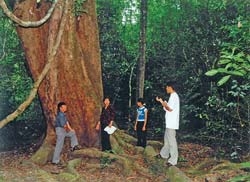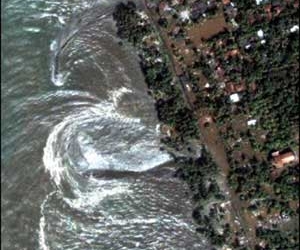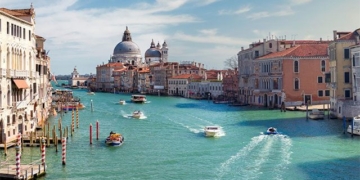Due to the overwhelming success of reforestation efforts, the 16-kilometer-long sand dunes along the Tottori coast are gradually shrinking, now covering only 12% of their area compared to 100 years ago.
With its sprawling golden dunes and clear blue skies, the Tottori Sand Dunes evoke images of deserts in the Middle East. However, this area is located along the coast of the San’in region, characterized by sparse population, in the southwest of Honshu Island, and represents a unique desert environment in Japan.
The dune system stretches 16 kilometers along the coastline, with peaks reaching over 45 meters. These dunes have existed for thousands of years but are slowly disappearing, not due to climate change, but because of the community’s efforts to “green” the area, as reported by CNN on June 16.
The dunes formed over 100,000 years, as the Sendai River transported sand from the nearby Chugoku Mountains into the Sea of Japan. Over centuries, winds and ocean currents have pushed the sand back onto the shore.
In 1923, when featured in the works of renowned author Takeo Arishima, the sand dunes began to emerge as a “hotspot” for tourism. Today, the dunes play a crucial role in Tottori’s tourism industry, attracting an average of 1.2 million visitors each year. Tourists can visit the Sand Museum, go sandboarding, and even ride camels.

Tottori Sand Dunes are the closest thing to a desert in Japan. (Photo: Sean Pavone/iStock/Getty).
“Desert” Shrinking Due to Tree Invasion
The sand dunes generate millions of dollars each year from tourism, but there is a problem: they are gradually shrinking, currently only 12% of their size from 100 years ago. The cause is a highly successful reforestation project implemented in Japan after World War II. In Tottori, the project aimed to convert sand dunes into forests and agricultural land to feed the population, mitigate damage from sandstorms, and create a better environment.
“Many trees were planted on coastal sand dunes across Japan to prevent sand from blowing away. Especially in the 20th century, with more advanced technology, coastal forests were formed. The reforestation project was so successful that many coastal dunes were transformed into fields, residential areas, and the dunes disappeared,” explained Dai Nagamatsu, a professor in the Faculty of Agriculture at Tottori University.
As the reforestation project progressed, scholars and tourism operators suggested preserving part of the desert for future economic and research purposes. Local authorities agreed and designated 160 hectares of the sand dunes, equivalent to 12% of the area, as a national park for conservation.
Efforts to Clear Forests and Protect the “Desert”
By 1972, efforts to clear the invasive forests from the desert faced significant challenges. The introduced tree species constantly attempted to regrow, preventing the movement of sand – which is responsible for creating the famous ripples of the Tottori Sand Dunes. Vegetation began to cluster in areas that were once flattened forests. Since then, scientists have continuously battled to prevent the desert from shrinking.
This is perhaps not surprising, as Japan’s reforestation techniques are so effective that they have become an export commodity. The country is home to the famous Miyawaki method of afforestation, developed by botanist Akira Miyawaki in the 1970s, which has been applied in various forests around the world, including the Amazon rainforest in Brazil.
Today, volunteers frequently come to remove stubborn trees growing on the sand – a tradition that began in 1991. This action is necessary to prevent further vegetation growth. The Tottori government even adds more sand to replenish the dunes.
Many scientists believe that the unique conditions of the Tottori dunes make them worthy of preservation. “The environmental conditions of the Tottori Sand Dunes are different from arid lands because of the humid climate,” Nagamatsu stated. He and other experts are also planning research in this area.
Some scientists even speculate that as climate change continues, restoring the dunes may become a better protective measure than afforestation. “Considering the potential tsunami damage that could occur in Japan in the near future, it may be necessary to reconsider current coastal land use and consider restoring natural sand dunes along the Japanese coastline,” Nagamatsu commented.





















































